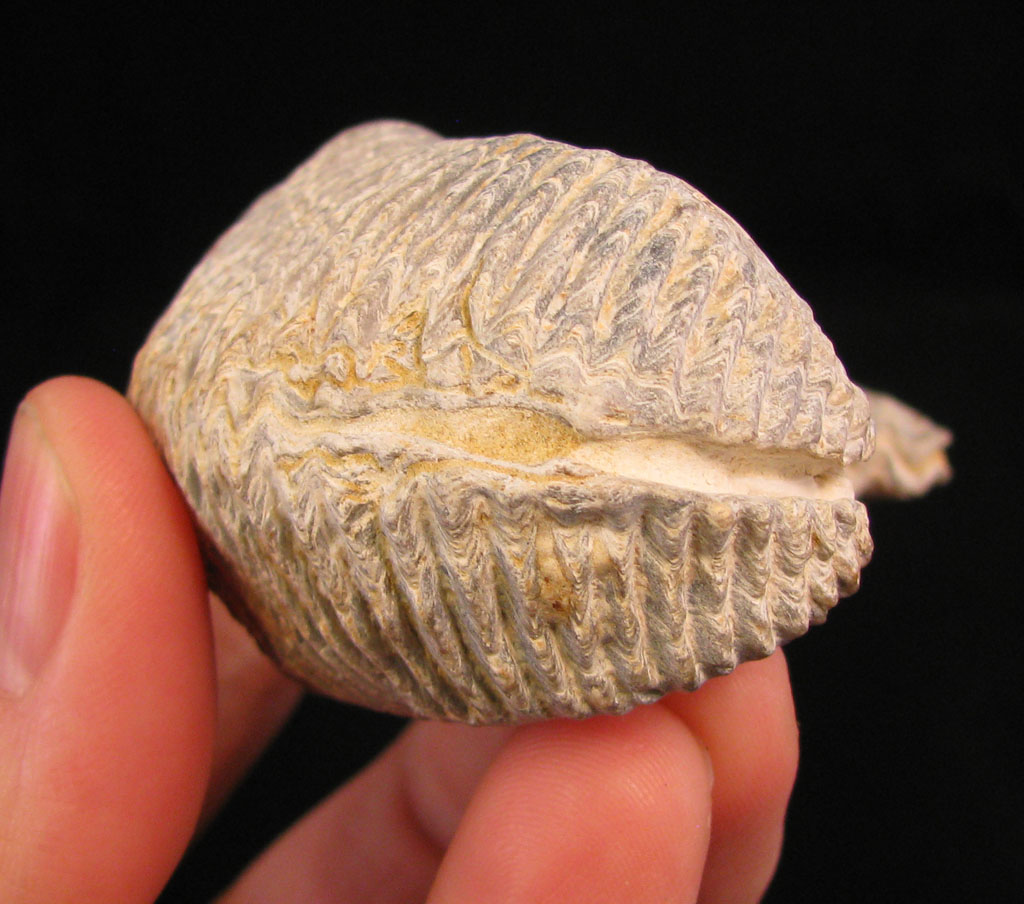Brachial valve
Anterior
Pedicle valve
Posterior
Profile
Edit (04/29/2014) - I wrote this post originally in December of 2013 and since then have consulted the "Index of North American Fossils" which states that Cyrtospirifer disjunctus is "a loosely drawn species and the name probably should not be used for many post-Chemung types now placed here" (pg. 321). As the Wiscoy formation is considered part of the Chemung fauna C. disjunctus could properly be used here but a comparison to C. whitneyi from Iowa shows a closer resemblance both within the book (plate 121 - 53 to 55) and with a specimen I posted earlier.


















































